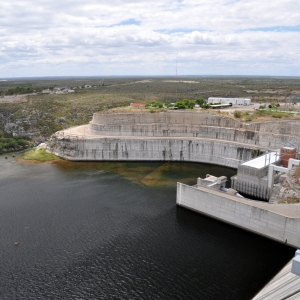The Stream, February 2, 2022: Public Distrust of U.S. Drinking Water Remains High Years After Flint Water Crisis
Editor’s Note:
It’s been called a year for transformation. So we’re transforming The Stream to better serve you.
We’re adjusting the schedule to bring you the information you need. Along with some surprises.
We want to hear what you—and our water world—most need from Circle of Blue. Email info@circleofblue.org and tell us what you think, and what you’d like to see. And be sure to follow and share on Instagram, Facebook, Twitter, LinkedIn, and YouTube.
YOUR GLOBAL RUNDOWN
- Children in Ethiopia are suffering from severe malnutrition as drought deepens across the country.
- Storm Ana serves as a reminder of climate change’s worsening impact on the world’s most vulnerable communities.
- Protected land and water in Ecuador are contaminated after an oil spill last week.
- The cost of flooding in the United States is expected to rise nearly 30 percent by 2050.
Public distrust of drinking water in the United States remains high as the government makes plans to address water quality and access.
“Problems in one place erode trust in other places.” – David Switzer, a water quality and public policy researcher at the University of Missouri. To move forward with ambitious plans to address water quality and access, the U.S. government must overcome deep public distrust of tap water, writes the Associated Press. National distrust of drinking water rose drastically after elevated lead levels in Flint, Michigan’s supplies were made public—years after government officials were made aware of the issue. Experts say earning the trust of Black and Hispanic communities, which are most often affected by drinking water contamination, will be especially challenging.
- In Context: Mistrust of the government, fears related to immigration, and unclear messaging make a Chicago program to replace lead pipes a hard sell in some neighborhoods, Circle of Blue reported last summer.
In Recent Water News
In Case You Missed It:
HotSpots H2O: Polluted Rivers, Scarce Water, Sinking Capital: Report Warns of Dire Water Threat Facing Indonesia – Depending on how they are addressed, water issues could slice 7 percent from Indonesia’s GDP in 2045–or boost it by 3 percent.
What’s Up With Water—January 31, 2022 – This week’s episode covers winter weather that once again crippled Jackson, Mississippi’s drinking water system, a burgeoning program to pay farmers to conserve water in New Mexico, and ongoing drought and displacement in Somalia.
Drought Deepens Hunger In Ethiopia
As drought plagues Ethiopia, the country’s children are suffering from malnutrition. As internal conflict, economic downturn, and prolonged drought continue to plague the country’s southern and north-eastern regions, aid organizations say hunger will only worsen. An estimated 4.4 million people are facing critical water shortages, and more than 6.8 million people will need humanitarian assistance by mid-March, experts predict. Unicef says 850,000 children alone will experience severe malnourishment this year.
Today’s Top Water Stories, Told In Numbers
86 PEOPLE
United Nations officials said that Storm Ana, a deadly storm system that washed away roads and has killed 86 people in southern Africa, is a reminder of the climate change’s worsening impact on the world’s most vulnerable. Madagascar was the first country in the region to be hit by the storm. Earlier this week, some 72,000 people reported losing their homes. Climate change is making storms like Ana more intense and more frequent, scientists say. Regional officials are bracing for another storm—Batsirai—to bring more devastation next week.
2 HECTARES (5 ACRES)
Nearly two hectares (five acres) of protected land, including a river that supplies water to Indigenous communities, in the Cayambe-Coca National Park have been contaminated by an oil spill in eastern Ecuador. Heavy rains late last week caused a mudslide, causing a rock to hit and rupture a privately-owned oil pipeline. The country’s environmental authority has described the spill as a “major” pollution event.
On the Radar
A new study found that flooding in the United States could cost $40.6 billion by 2050, an increase of 26 percent. Majority-Black communities in the South, along the Atlantic and Gulf coasts, where residents have less access to climate adaptation infrastructure and funding for cleanup efforts, are bearing the brunt of floods more than ever before.
Jane is a Communications Associate for Circle of Blue. She writes The Stream and has covered domestic and international water issues for Circle of Blue. She is a recent graduate of Grand Valley State University, where she studied Multimedia Journalism and Women, Gender and Sexuality Studies. During her time at Grand Valley, she was the host of the Community Service Learning Center podcast Be the Change. Currently based in Grand Rapids, Michigan, Jane enjoys listening to music, reading and spending time outdoors.






Leave a Reply
Want to join the discussion?Feel free to contribute!